Leon Stein Interview with Bruce Duffie . . . . . . . . . (original) (raw)
Composer / Administrator Leon Stein
A Conversation with Bruce Duffie
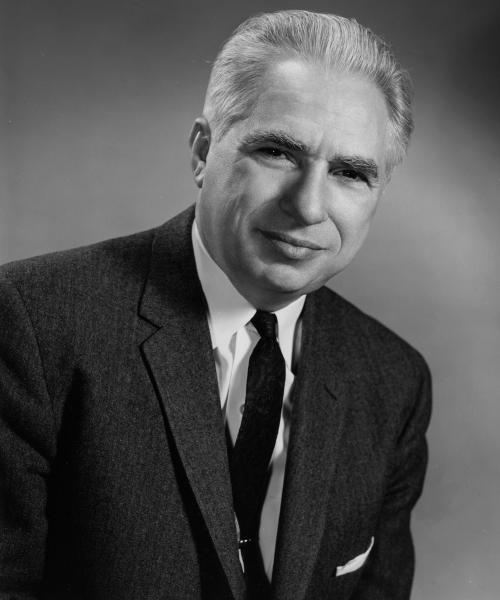
Leon Stein (September 18, 1910, Chicago - May 9, 2002, Laguna Hills, California) was an American composer and music analyst.
For nearly a half century Leon Stein was an esteemed figure in the musical life of his native Chicago, enriching the community’s cultural vibrancy as a composer, conductor, teacher, author, champion of humanitarian causes, and devoted friend to many young and up-and-coming musicians. His was a career and a steady contribution in which both the Jewish and the general musical spheres of the city took great pride.
Stein’s parents had immigrated to Chicago in 1903 from Bratslav, in the Ukraine. That year saw a marked upsurge in immigration from the Czarist Empire, fueled in part by the infamous Kishinev pogrom (in Bessarabia) and its aftermath. His father, a tailor and furrier by trade, was also an amateur singer who sang on occasion in synagogue choirs. The young Stein, too, sang sporadically as a boy chorister in local synagogues. That experience surfaced later in his academic Jewish musical interests as well as in many of his Judaically related compositions. Though his family, which followed mainstream observances and celebrations of Jewish life, was not orthodox in orientation, Stein later recalled the positive and permanent emotional imprint of the ethnically as well as religiously Jewish “feel” of their neighborhood, which always remained a part of his identity and consciousness as a creative artist_._
Stein attended DePaul University, where he received his MM in 1935 and his Ph.D. in 1949. He studied under Leo Sowerby, Eric DeLamarter, Frederick Stock, and Hans Lange.
He taught at DePaul from 1931 to 1978, and was Dean of the School of Music there between 1966 and 1976. Stein was also Director of the Institute of Music at the College of Jewish Studies, Chicago. He directed a number of Chicago ensembles, including the City Symphony of Chicago.
Stein's compositions were modernist in character; his works for saxophone are his most popular pieces. He also wrote on music, particularly Jewish music. His manuscripts are held in the Richardson Library at DePaul.
Stein refused to align himself with any particular musical movement in vogue at any one time, and he preferred to steer a “middle ground” between conservatism and progressive invention. “The term ‘pantonality’ best defines my musical language,” he explained in an interview, and he expanded upon how it applies to his music:
This is an inclusive idiom that combines 20th-century treatments of modality, tonality, synthetic scales, and post-serial dodecaphony; uses a harmonic-contrapuntal chordal structure of seconds and fourths as well as triads; and is indebted to this century’s emancipation of the dissonance and liberation of rhythm….My music is generally linear, notated traditionally for traditional (acoustic) instruments, and uses forms ranging from established patterns to a free continuum of motion, density, tension, and color.
A keen thinker about the nature of music, Stein outlined in 1963 as his “composer’s credo”:
I believe the most important function of music is meaningful communication. Musical composition is the transmutation of experience, in its broadest sense, into auditory patterns. The content of music, however, is neither emotion nor experience, but the aesthetic equivalent of both, achieved through its transmutation. A composer is, therefore, an individual who thinks creatively in terms of sonic symbols.… A musical composition as a work of art is a revelation of a reality beyond direct experience…the composer is simply the medium through which the idea is given embodiment in palpable form.
Stein was associated with the musical life of Chicago for half a century. A native of the city, he was born in 1910, and studied at DePaul University, where he taught for 47 years, ultimately serving as Professor of Music and Dean of the School of Music. He was also the conductor of the DePaul University Orchestra (1965-77), Director of the Community Symphony of Chicago (1945-65), Director of the City Symphony of Chicago (1964-84), and Music Director of Niles Township Jewish Congregation in Skokie (1956-66), having studied conducting with Frederick Stock and Hans Lange.
He was the composer of more than one hundred published works, including four symphonies, two one-act operas, five string quartets, and numerous solo and chamber works. His music has been performed by the orchestras of Chicago, Boston, Detroit, and Cincinnati, among the more than 90 orchestras that have played his compositions, and his quartets were recorded by the Chicago Symphony Orchestra String Quartet. Stein was the winner of the American Composers' Commission Award Contest in 1950 for his Symphony No. 2, a work described by composer and critic Peggy Glanville-Hicks as music of "considerable power."
Among his numerous awards and prizes Dr. Stein received both the Distinguished Alumni Award (1976) and the highest faculty award, the Via Sapientiae Award (1979), from DePaul University, and was inducted into the City of Chicago's Hall of Fame in 1982. He was also the author of The Racial Thinking of Richard Wagner, a book based on his doctoral dissertation, and the books Structure and Style and Anthology of Musical Forms. He was a member of the American Composers Alliance and the Society of Composers, Inc.
Dr. Stein is survived by his wife, Anne Helman Stein of Laguna Woods, California; two sons, Robert of Grand Rapids, Minn., and Kenneth of Berkeley; and four grandchildren.
-- Portions of this biography are by Neil W. Levin, and were posted on the Milken Archive website.
At the beginning of 1988, I contacted Leon Stein, and because he was not coming back to Chicago very soon, we agreed to have a conversation on the telephone. He was enjoying his retirement, but still creating music, and we began with some of his recollections about musical life in the Windy City . . . . .
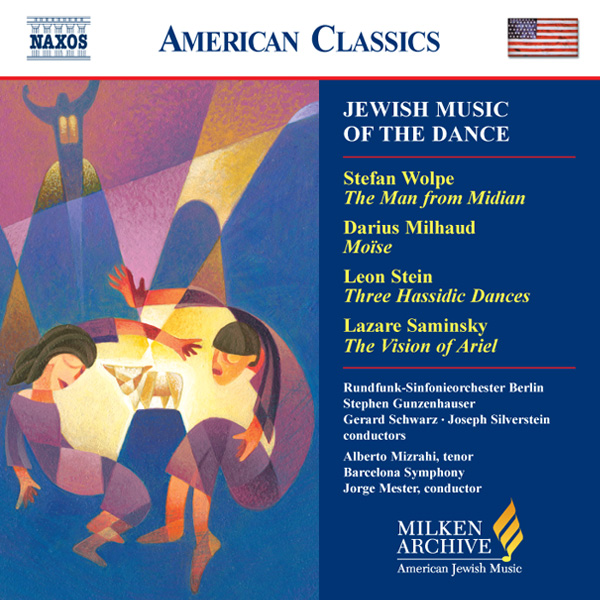 Bruce Duffie: You were at the DePaul University for many, many years. What were the most significant changes you saw over your tenure?
Bruce Duffie: You were at the DePaul University for many, many years. What were the most significant changes you saw over your tenure?
Leon Stein: I came to the school in 1931, so the first immediate noticeable change was the fact that originally the faculty was essentially of Germanic training, which reflected what was true in the matter of teachers in American colleges during that period. These were people who were graduates, generally, of the Vienna conservatory or the Berlin Hochschule. The violin teachers and the piano teachers were mainly European. The next phase was the changes which were occasioned by the fact that an increasing number of instructors were from Russia, which reflected the growing importance of Russia in the world of music. Then the next phase was when the schools of music began to come of age themselves, and significant numbers of the faculties were individuals who had been trained in America. So, I would say of these phases of change were noteworthy.
BD: They were all positive steps?
Stein: Yes, they’re all positive, because while the influence was significant, we have reason to be grateful since it was the kind of pedagogy and training which was significant and productive. But the most important thing was the coming of age of the American schools of music.
BD: What about the caliber of student? Did that change over the course of many years? [Vis-à-vis the recording shown at right, see my interviews with Gerard Schwarz, and Jorge Mester.]
Stein: The change was noticeable, particularly during the period after World War II, because we got a group of students who were a little older, a little more experienced, a little bit more serious in terms of their outlook. That was a significant change.
BD: You taught theory and composition for quite a while?
Stein: Yes, as a matter of fact throughout practically the whole period. I began by teaching violin.
BD: Is composition something that really can be taught, or must it be innate within each young student?
Stein: No, and I said this many times in different ways... One learns a certain technique, but composition as such can no more be taught than you can teach a person the color of their eyes. One must take for granted an innate capacity which may be helped by good teaching and guiding. You don’t teach composition. You teach a technique, mechanics, and perhaps concepts. The innate quality must be there. If one does not have the innate combination of intellectual capacity to be a composer, it is the same as trying to be a singer if you don’t have a voice mechanism. No amount of teaching will implant that, but teaching can help what is there, more so in terms of composition.
BD: In your own music, or in the music of your students, where’s the balance then between the inspiration and the technique?
Stein: The balance is the guidance which is given by the instructor in terms of organization, direction, and the capacity of finding some point of coincidence by what you, as a teacher, have to impart, and what the person, as a student, may have the potential to accept and be guided by.
BD: I want to come back to your teaching a little later on, but first let us talk about your own compositions. Were you basically pleased with the performances that you heard of your works?
Stein: Oh, yes. In this respect, I’ve been quite fortunate. Most of the works I’ve written, except some of the early works, have been performed, and they’ve all been published. When I used the term ‘published’, one must understand that in this period, the term publication has to do often with publication from copies, that is, a facsimile edition. The American Composers Alliance is essentially material where there is a copy, and then it is produced on demand when an order is given, and that’s all. The other type is the more usual type, or the more traditional type, which is the engraved type. A good number of my works have been engraved and published that way, but that is a much more expensive process. In terms of the reality of the marketplace today, one of the serious problems is that matter of Xeroxing, which has stymied the publication of music because publishers. They just don’t know how much of a sale they can depend on when there is a realization that copies maybe Xeroxed and passed around. In view of that, I feel fortunate for the works of mine which have been engraved. Very recently, the expense of engraving my Trio for Violin, Saxophone and Piano was borne by Cecil Leeson, who commissioned my work, and whose faith in my work was such that he simply paid for the engraving.
Cecil Leeson (16 December 1902 North Dakota – 17 April 1989), was widely credited with establishing the saxophone as a legitimate concert instrument.
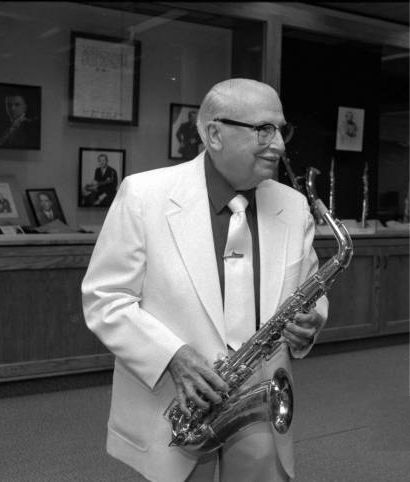 In 1921, Leeson enrolled as a saxophone major in Dana's Musical Institute in Warren, Ohio (currently part of Youngstown State University).
In 1921, Leeson enrolled as a saxophone major in Dana's Musical Institute in Warren, Ohio (currently part of Youngstown State University).
From 1926, he worked on occasion in various commercial groups in Detroit, and in Ohio. This included a bi-weekly session for radio station WHK. His approach to classical saxophone playing differed from jazz and dance saxophone music popular at the time, and helped promote classical saxophone style in a mainstream medium.
A writer in the Hollywood News said that "in Leeson's capable hands, the saxophone [is] no longer the blatant jazz instrument of popular conception, but an instrument of really beautiful tone color [...]. If there were other saxophonists who could play as Leeson does, the saxophone would speedily make its appearance in the symphony orchestra."
During the early 1930s, he joined the faculty at the Hollywood Conservatory of Music and taught there for several years. From 1934 to 1939, Leeson collaborated with American composer Paul Creston, resulting in several major pieces for the classical saxophone repertoire.
In 1937, Cecil Leeson was the first saxophonist to play at Town Hall in New York City. He was also one of the first saxophonists to appear as a soloist with major American symphony orchestras. More than 50 works for saxophone were written for him by composers such as Leon Stein, Edvard Moritz, Paul Creston, and Ferde Grofé.
Leeson taught saxophone performance at Northwestern University from 1955 to 1961 and then at Ball State University. His papers, and his collection of original Adolphe Sax and other famous saxophones are in the America's National Music Museum at the University of South Dakota [_shown in photo_].
The 2nd World Saxophone Congress in Chicago in 1970 honored Leeson for 50 years of pioneering and contributing to the establishment of the saxophone in the field of music.
According to Stephen Cottrell, "Leeson's style of saxophone performance established in the United States a school of classical saxophone playing that differed from the European model."
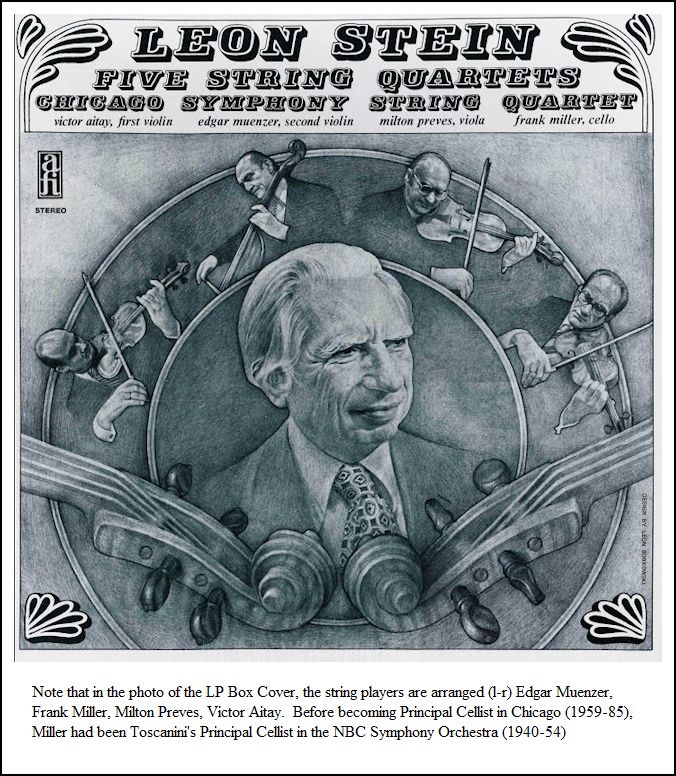 BD: That must be very satisfying for you.
BD: That must be very satisfying for you.
Stein: Well, I’m certainly feel very grateful when this situation, or a similar situation, has developed.
BD: Thinking about the performances you’ve heard of your works...
Stein: Yes, now to come back to the matter of the performances. First of all, let me state that generally a composer is grateful for performances, and particularly for good performances. In this respect, when I think back quickly to the performances and recordings which I have had, the five string quartets played by a group as talented as the Chicago Symphony String Quartet [_shown at left_], certainly one has reason to be grateful. The first performance of my Concerto for Clarinet and Percussion was given by John Bruce Yeh [_Assistant Principal, and E-Flat Clarinet with the Chicago Symphony_], with the DePaul University Percussion Ensemble. I conducted the performance. I wasn’t the permanent director of the ensemble, but I directed that performance. I’ve heard other performances which have had excellent performers, but John’s was quite definitive. It was really, a very, very first-rate performance. I might mention also the performances that pianist Lydia Sterba has given of my piano works nationally. Then, all the violin works performed with the excellence of David Moll [_also of the Chicago Symphony_]. I may mention also François D
’Albert’s performance of my Violin Concerto, and the performance of my _Cello Concerto_by Gary Stucka. He is now a member of the Chicago Symphony Orchestra, and was a member of the Cleveland Orchestra at that time. One other was the excellent performances by Donald Peck [_Principal Flute of Chicago Symphony_] of my Rhapsody for Flute, Harp and String Orchestra. He not only played it with the String Orchestra of Chicago, but took it on tour and played it in Philadelphia, and in New York, where it was fortunately excellently reviewed. The first performance of the work was given by Walfrid Kujala [_Assistant Principal Flute, and Principal Piccolo with the Chicago Symphony_], who subsequently gave a least one other performance of it with piano. So, I have every reason to be grateful for the quality of the performances which have been given of the works. When it comes to the orchestra performances, again I feel fortunate in having been present when the Chicago Symphony Orchestra did one of my works [_Festive Overture_] with Martinon.
BD: Is there ever a case where the performers, or the interpreters, found things in your scores that you didn’t know you had put there? [Vis-à-vis the recordings of the string quartets (shown here) and the saxophone quintet (shown below), see my interview with Victor Aitay.]
Stein: [Laughs] Let me tell you a peculiar thing that happened when a work of mine won the American Composers Commission Award. It was a commission for a work that was then to be played by an orchestra in New York, which was not fully professional. I would call it a semi-professional orchestra, and so I used the money to copy out the parts of the Second Symphony, which had just been completed. When I came to the rehearsal right before the performance, I found that the conductor was doing the _Scherzo_three times as slow as it should have been. In other words, what I had given for a dotted half-note, he had misinterpreted the metronome mark for a quarter note. He said they had rehearsed it that way, but I said I didn’t care, it can’t be done that way. I insisted and it was done in the correct tempo. The performance worked out, and got an excellent review in the New York Herald Tribune by Peggy Glanville-Hicks.
BD: Would you have been appalled if it had gotten an excellent review, even though the correction had not been made?
Stein: I would have been surprised. [Both laugh] I must tell you quickly about an incident... The First Violinist and Founder of the Paganini Quartet, Henri Temianka, wrote a book entitled Facing the Music. In it, he spoke about a recording of the Ravel Quartet. He was astounded when he got the test pressing of the finished record that they had somehow omitted a da capo in the Scherzo movement. At first, he wanted them to withdraw that record, but they said just to wait, and not one critic noted the fact that the da capo had not been made.
BD: How did you divide your time between administrative chores, teaching assignments, and the actual composition process?Stein: Staying up late at night! [Both laugh] Fortunately, at that time I was able to get by with not too much sleep. It was not unusual for me to work until two o’clock in the morning.
BD: And still get up for an eight o’clock class???
Stein: Yes. It is necessary for anybody who has a compulsion. That does not necessarily mean that everybody who has a compulsion is going to do significant or lasting work. We all know that. But if you have the compulsion to do this, you don’t question it, and you don’t even think in terms of being worth it in retrospect. In a sense you cannot help yourself. You must do it.
BD: Is composing fun?
Stein: That has to be a matter directed to an individual. In some casesf it is demanding, and it depends on how it works out. For example, in case of composers like Mozart, it would have to be fun because it was so spontaneous and so natural. In other cases it can be laborious. Have you ever hand-copied any music?
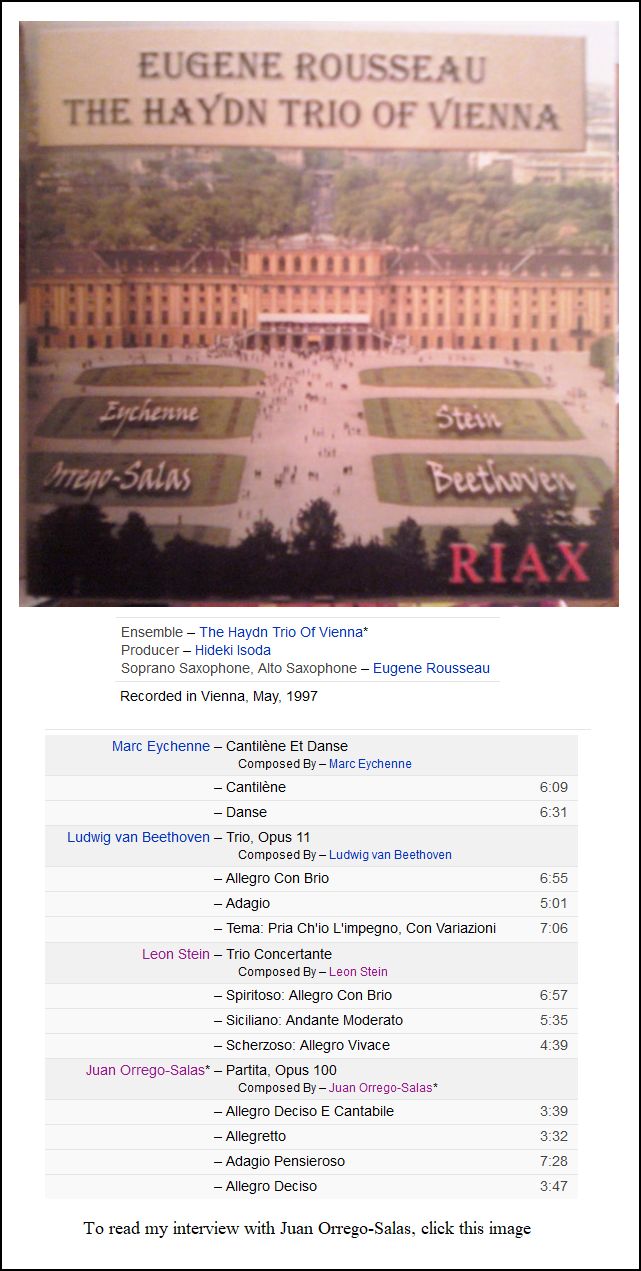 BD: [With a slight groan] Oh, yes...
BD: [With a slight groan] Oh, yes...
Stein: Then you know the sheer physical problem of writing the many notes that are involved in a complex score is simply a labor. But it’s carried forward by the impulse to write, and we hope that it’s going to turn out well when it’s all done.
BD: What advice do you have for young composers coming along?
Stein: The most important thing to do is to put something down, and not expect too much about the work, because there is a degree of inevitability about what the quality and the nature of a work is going to be. In retrospect, one sees that the works are often not a result of simply good intentions. Some turn out very well, some turn out less well, and the significant thing about composition, when you speak in terms of informing a young student, is to put something down. A student at the University had been assigned to write a setting of a Mass. She came to me and said she’s paralyzed because and couldn’t do anything. I said,
“What you’re thinking of is a totality, and you’re overwhelmed by this. Remember that no composer has ever developed the capacity to put down more than one note at a time. Don’t be concerned with the totality of the Mass itself. Don’t even think of writing a whole movement. Just write the first section of what is the traditional first movement, the Kyrie Eleison, and don’t think beyond that.”BD: Are we not getting a little bit away from that with composers who are working with electronic sounds, instead of notes on paper?
Stein: That is correct. This brings me to the notion that today in composition, it is a great deal of inventiveness, and less of what we may call creativeness. In terms of inventiveness, you have the new figure in terms of composition, and that is the composer-technologist, who is particularly active in the field of electronic music, where the technology sometimes over-balances the compositional aspect.
BD: [With a bit of trepidation] Are you optimistic about the future of music?
Stein: [Laughs] Yes. One thing which you can predict is that the future is unpredictable. The metamorphosis of the last, say, seventy-five or eighty-five years
— since the beginning of the Twentieth Century — you find these terms which are the result of cyclic changes, meaning those which have a historical basis. But you also find the simple matter of action and reaction, which is manifested, for instance, in the serial system of Schoenberg on the one hand, and the reaction against that, which is symbolized by Orff, who was a serial composer first, and then became quite tonal in Carmina Burana. So, you have these aspects of change, which include the reactions to the craziest trends, and which accounts for the multiplicity of trends in the Twentieth Century. In broad terms, where you had a 150- or 300-year cycle in music, what characterized each of the previous periods was a kind of umbrella technique of the modality up through the Renaissance, and then the tonal period, roughly from 1600 to 1900. So, that’s your 300-year-period. But you cannot have that kind of designation from 1900 on, because the umbrella definitive of the period is not a uniform trend, but a multiplicity of trends.
BD: Is this a good thing to have this wide diversity?
Stein: It’s very confusing, but one doesn’t choose these things. It’s something which is inevitable, and to say it is a good thing is to say it is good to have day and night. It is inevitable in terms of both the sociological forces and artistic forces which have governed this period. It is inevitable that these are changes, and the multiplicity of trends develop, which you find in all these arts, including music.
BD: This brings up the great big philosophical question. What do you feel is the ultimate purpose of music in society?
Stein: I hope I have a good answer for that. The function of all art
— and music is one of the arts — is the enrichment of life. From that standpoint, when you ask about the function or the nature of music, then I believe that the most important function is the matter of meaningful communication. I was asked to do an article on the composer’s credo, and it was published in the American Composers Alliance Bulletin, and I put it out there that musical composition is the transmutation and experience, in its broadest sense, into auditory patterns. But the content of music is not emotion, it’s not experience, but the aesthetic combination of both which is achieved through this transmutation. I also said a composer is an individual who thinks creatively in terms of sonic design and sonic symbols.
BD: Some of these things you have written over the years. Have your ideas changed at all toward these big philosophical problems?
Stein: Not essentially, no. I grew more sure of what I thought was true.
BD: I’ve asked about advice for composers. What advice do you have for the music administrator?
Stein: One very obvious thing is that the music administrator is essentially a middle-ground administrator. He works within the fabric of an organization, where he makes decisions which have a certain finality within his own department, but in reference to the whole organization. Whether it’s a large music school, or a department within a university, he is a middle-ground administrator, and it is a peculiarly hybrid position. I’m always amused in the search for an administrator that there is a tremendous stress on an artistic background
, meaning international recognition as a performer, or a composer. But the administrative work is a matter of hard-nosed budgets, and running an organization. Many may have had the same experience of it as I had of running things by the seat of your pants, so to speak. I didn’t have too much contact with budgets and organizational aspects of that kind, but I was very fortunate, as this is something which is very difficult to measure. But in retrospect, an important factor — possibly the most important factor for an administrator — is to hopefully have the capacity to work with people. I say ‘hopefully’ because this is something you cannot learn. It must be part of you from the start.
BD: But within that capacity to work with people, do you feel it would be better to get a professional administrator who’s interested in music, rather than a professional musician who is interested in administration?
Stein: Yes. It’s a difficult thing. Some schools actually have two people. There is the Executive Director, and there is the Musical Director. Those schools have tried to solve the problem in that way. But most university departments, whether it is the Dean or the Chairman, have one individual who combines within himself the qualities to guide the institution artistically. Whether he knew it before, or learned it on the job, if he doesn’t have it, he develops the capacity to run the organization.
BD: Do you feel that the administrators who are now in positions all across the country, are doing a good job of this?
Stein: Yes, I do. I have been very favorably impressed every time we had a meeting of the administrators of the schools of music. We’ve got an annual convention, and I’ve always been aware that in some cases, an individual is more of a business administrator, and in some cases the individual may be more of an artistic administrator. But in some fashion, these two qualities have to be combined if one is to be successful in directing the organization.
BD: Should this be a new area of study
— music administration?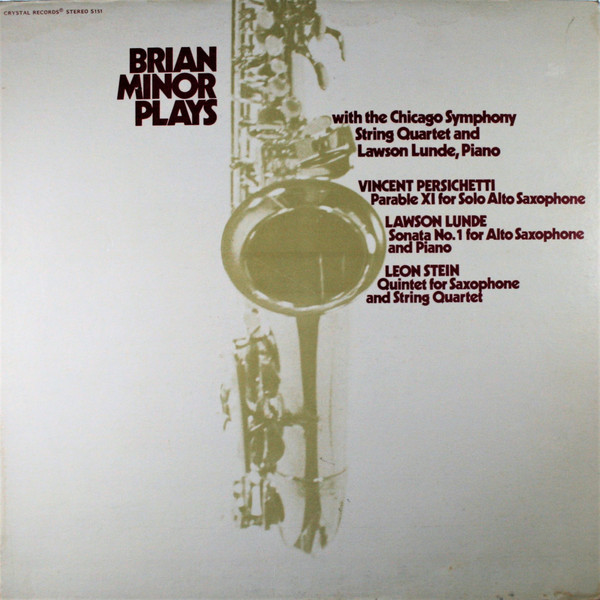 Stein: Yes, I certainly do. It is a possibility, because I’m sure there are some schools which have some courses approaching that now, and there is a growing realization that there is this combination of qualities which is necessary. The only thing, in terms of preparation, is to consider the relatively small number of administrators who will get positions. There’s an economic problem to be solved within the institution as to whether it would feasible to have a degree course of that kind. But it is a factor, where much of the essential information is gathered along the way, and the main thing, which is very, very difficult to measure and to evaluate, is not the capacity of ‘getting along’ in an avid sense, but the capacity to work with individuals so that you can give them the best, clear-sighted direction from your standpoint, and evoke the kind of cooperation which makes an institution feasible, workable, and productive.
Stein: Yes, I certainly do. It is a possibility, because I’m sure there are some schools which have some courses approaching that now, and there is a growing realization that there is this combination of qualities which is necessary. The only thing, in terms of preparation, is to consider the relatively small number of administrators who will get positions. There’s an economic problem to be solved within the institution as to whether it would feasible to have a degree course of that kind. But it is a factor, where much of the essential information is gathered along the way, and the main thing, which is very, very difficult to measure and to evaluate, is not the capacity of ‘getting along’ in an avid sense, but the capacity to work with individuals so that you can give them the best, clear-sighted direction from your standpoint, and evoke the kind of cooperation which makes an institution feasible, workable, and productive.
BD: Coming back to your music, I want to be sure and ask about your two operas.
Stein: They are one-act operas. [_Vis-à-vis the recording shown at left, see my interviews with Vincent Persichetti, and Lawson Lunde._]
BD: Should they be performed together as an evening, or separately?
Stein: They’re short enough to be performed together, but they don’t necessarily have an inter-relationship. [Laughs] I don’t think that, even at the most optimistic, I would reach a point where these might become what are called ‘the ham & eggs’ of the opera repertoire, like Pagliacci and Cavalleria Rusticana. My works have each had their performance, and there they are. The first one was performed fully staged by the Chicago Chapter of the International Society for Contemporary Music, and the second one was given in concert form at the University of Chicago at the meeting of one of the chapters of the Teachers of Singing.
BD: Is opera a form that you enjoyed working in?
Stein: Yes. I wouldn’t have done it if I hadn’t enjoyed it. I’ve done more instrumental works than vocal works in general, but some of the vocal works have turned out very well... for instance, The Lord Reigneth, which is a cantata, and is a setting of the 97th Psalm for women’s chorus, tenor solo, and orchestra. There have been fine performances of that.
BD: What are the particular joys and sorrows of writing for the human voice?
Stein: The joy is getting a lovely voice to sing it beautifully. The sorrow is the fact that sometimes, in the case of a solo voice, you have a certain sound in mind, and often you think in terms of a great voice. In terms performances of opera, there isn’t a middle-ground. You cannot have a pretty good performance of an opera. Either it is a good performance, or it isn’t, and this will clarify what I mean by some of these problems in the matter of vocal works.
BD: Shifting gears just a little bit, what elements do you feel contribute to greatness in music?
Stein: [Chuckles] I’m not going to give you a formula which, as you well know, simply cannot be applied. In the long run, the matter of what constitutes value or greatness comes down to educated opinions tends towards the consensus. In the short run it may not be so, because the annals of music criticism are full of the negative evaluations of what subsequently turned out to be important compositions. What makes music significant is its meaningfulness for the listener, and over the long-run, it translates into such things as being something that the performer enjoys performing. It’s also something that people will get some degree of pleasure from in terms of listening. Now I use the word
‘pleasure’ in a broad sense, because music has become polarized between what we may call ‘recreation’ and ‘revelation’.I’m using the term artistically, as in the matter of artistic pleasure, to cover that whole span. We have the matter of the significance in terms what the listener gets out of it, and the pleasure that a performer will get from playing it. Also, what is comes down to in the long-run is the number of people who will buy the work if it’s published, and people who will purchase tickets to hear it if it’s performed. These are the concrete elements which are involved in the expression of taste.
BD: Is the public always right?
Stein: No! [Both laugh] In the long-run, educated opinion tends towards a consensus, and in the short-run, there are many things which will affect the public reaction. Here I’m restricting this aspect of the discussion to what you may call ‘serious music’, or ‘long-term music’, rather than get into the problem of evaluating the popular music, rock music, and so on.
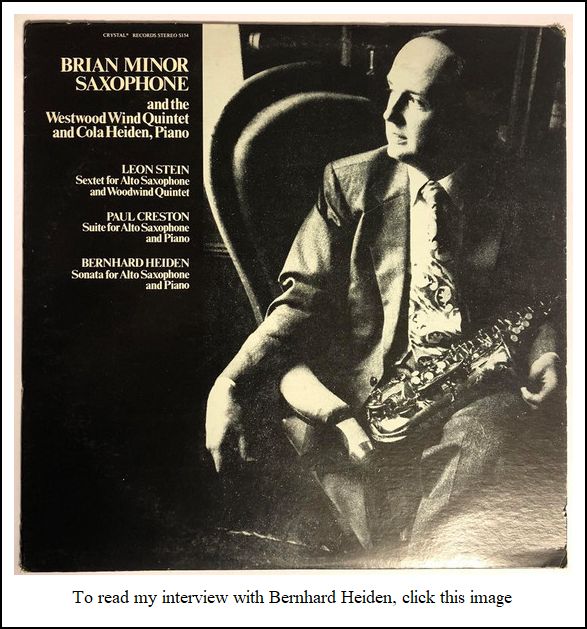 BD: Is ‘rock’ music?Stein: [Laughs] I’m sorry I brought that up.
BD: Is ‘rock’ music?Stein: [Laughs] I’m sorry I brought that up.
BD: [Re-assuringly] We’ll stay here only a moment.
Stein: Let me give you an honest, individual opinion. It is music that I personally do not react to, but I can understand that it has some meaning, some significance, particularly for younger people. It’s been called ‘youth music’, and I don’t want to establish a fiat to say this is so, or this is not so. I’m sure part of my reaction is an age problem. I do not find the same degree of meaning, significance, or moving qualities in rock that I find in art music.
BD: Returning to the public, what advice do you have for audiences that go to hear concerts on which a piece of yours will appear?
Stein: [Thinks a moment] Listen! If you want to limit the discussion to pieces of mine specifically, let me point out that one of the criticisms of my work has been they are called ‘middle-ground modernism’. So, in general it is quite accessible. I have here some reactions. Can I take a minute to read these to you?
BD: Sure!
Stein: Karen Monson [_critic for the_ Chicago Daily News _1973-78_, _and advisor to Paul Fromm_] wrote about
‘mainstream Twentieth Century music’ to refer to one work of mine. A critic in The New York Times, when reviewing my _Sextet for Saxophone and Woodwind Quintet_said that ‘it’s an example of middle-ground modernism’. Another wrote of the String Quartet that it was ‘tightly organized music, very much in the modern idiom’. The Concerto for Clarinet and Percussion Ensemble, which is some very far-out music, was recently performed at the University of California at Long Beach. The critic said it was ‘relatively conservative’, but then pointed out that this was only in reference to the rest of the program. [Both laugh] The Symphony No. 2 was called ‘neo-romantic’. My String Quartet No. 4 was said to be ‘neo-classic’. As to my Rhapsody for Flute and Piano, a Philadelphia critic wrote of the ‘tautness of harmonic originality’, and said it had ‘a wide variety of sounds and effects’. On the other hand, about Three Choral Songs, Irving Sablosky, when he was critic of the Daily News, wrote that ‘the musical language was moderate, and not only avoided atonality, but sounded fresh and original’. The Symphony No. 4 was criticized as being ‘powerful, but hard on the ears’. Another orchestral work, Then Shall the Dust Return, was ‘accessible, even on a first hearing’. So, you see there is a wide a variety of possible reactions to a work, and in my own case, I would just simply say to an audience, “Listen,” because depending on nature of the work, some things will be more accessible, some will be less accessible. I don’t feel that my own works demand an enormous of explanation.
BD: [Mindful of the disparity of opinions expressed] What advice do you have for the critics?
Stein: The same thing
— listen! I would say if possible to listen with an unbiased ear. This goes for both the conservative audience and conservative critic, or the very avant-garde audience and the avant-garde critic. Listen to the work in terms of itself, not in terms of where one thinks a contemporary music is, or where it should be. Just to give you an idea of what I may call the pre-set mind, one of my works for saxophone, the Quintet for Saxophone and String Quartet, fortunately was given pretty uniformly good reviews. However, one critic wrote that for him, ‘the saxophone exists only as a performance instrument for jazz. If it’s not jazz, then it doesn’t have any validity’. The interesting thing that of these works were commissioned — five by Cecil Leeson, and two by the late Brian Minor — in the hopes of establishing the so-called ‘serious music’ or ‘classical music’ repertoire for the saxophone. The use of the sax in jazz music, of course, is beyond question. But if one comes with a pre-set notion that the saxophone is to be only in jazz works, then the person cannot listen with an unbiased mind.
BD: He’s already eliminated the possibility.
Stein: Right, automatically.
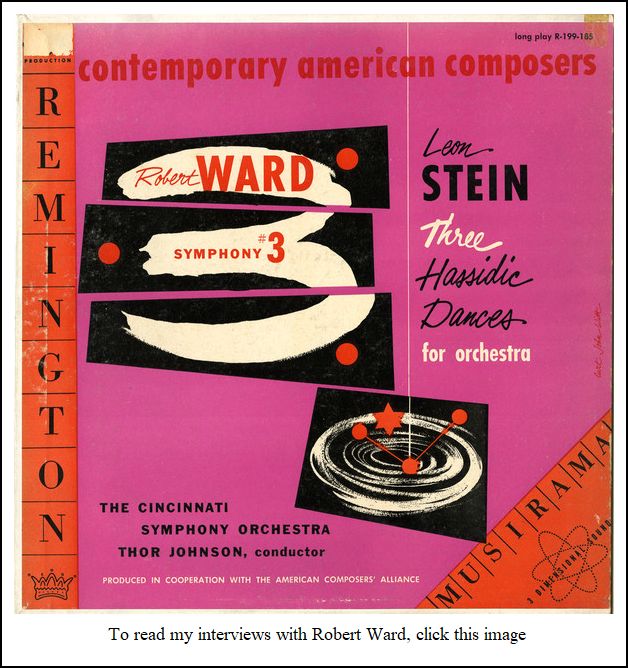 BD: What is next on your calendar?
BD: What is next on your calendar?
Stein: I’ve been very, very busy these last few weeks. I just completed part of a commission for a work for marimba and bassoon, that was commissioned by a virtuoso marimba player, Deborah Schwartz, who lives in California. She had heard something of mine, and kindly commissioned this work. It’ll be a three-movement work. I have finished two movements, the last two movements, actually, and I hope I can get back to doing the first movement after getting by a lot of the things which have come up recently here.
BD: Are most of the works that you write on commission, or are they things you just have to write?
Stein: No. I’ve written some commissioned works, such as the seven works for saxophone, and a Trio for Trumpets, and this work for marimba and bassoon, but the great majority of works were not written on commission.
BD: Is it not easier to write with someone specific in mind?
Stein: It really was not a matter of writing with somebody specific in mind, as writing for something specific in mind. An idea may come up which will be particularly suited to the nature of an instrument, or there are different, varying directions or reasons for writing. So, it varies in these particular ways.
BD: When you’re writing a piece, how do you know when it’s finished? How do you know when to put the pen down?
Stein: It invariably becomes a matter of your own determination. I find now, in the last few years, that the works would tend to be a little shorter than they were before. I will have some notion of the length of a work, and then when it has said all it has to say, and it reaches what we call this point of determination, that’s the end of it.
BD: When you’re writing, are you in control of the music, or is the music in control of you?
Stein: There are certain things which grow out of the music itself. For instance, in this last work [_Duo Concertante for Marimba and Bassoon_], of which I’d completed the last two movements, an aria and fugue, the idea for the last movement was such that in its nature, from my viewpoint as I saw it, was a fugal idea. So, the last movement turned into a concert fugue for the two instruments. In that sense, the direction came from the music itself, the idea of the notes themselves.
BD: It has been fascinating speaking with you this evening. I do appreciate your taking the time to talk with me. I look forward to playing more of your music on the air, and putting together a special program of your music and parts of this interview.
Stein: Thank you very much.
======== ======== ========
---- ---- ----
======== ======== ========
© 1988 Bruce Duffie
This conversation was recorded on the telephone on January 16, 1988. Portions were broadcast on WNIB in 1990, 1995 and 2000. This transcription was made in 2020, and posted on this website at that time. My thanks to British soprano Una Barry for her help in preparing this website presentation.
To see a full list (with links) of interviews which have been transcribed and posted on this website,click here. To read my thoughts on editing these interviews for print, as well as a few other interesting observations, click here.
Award - winning broadcaster Bruce Duffie was with WNIB, Classical 97 in Chicago from 1975 until its final moment as a classical station in February of 2001. His interviews have also appeared in various magazines and journals since 1980, and he now continues his broadcast series on WNUR-FM, as well as on Contemporary Classical Internet Radio.
You are invited to visit his website for more information about his work, including selected transcripts of other interviews, plus a full list of his guests. He would also like to call your attention to the photos and information about his grandfather, who was a pioneer in the automotive field more than a century ago. You may also send him E-Mail with comments, questions and suggestions.